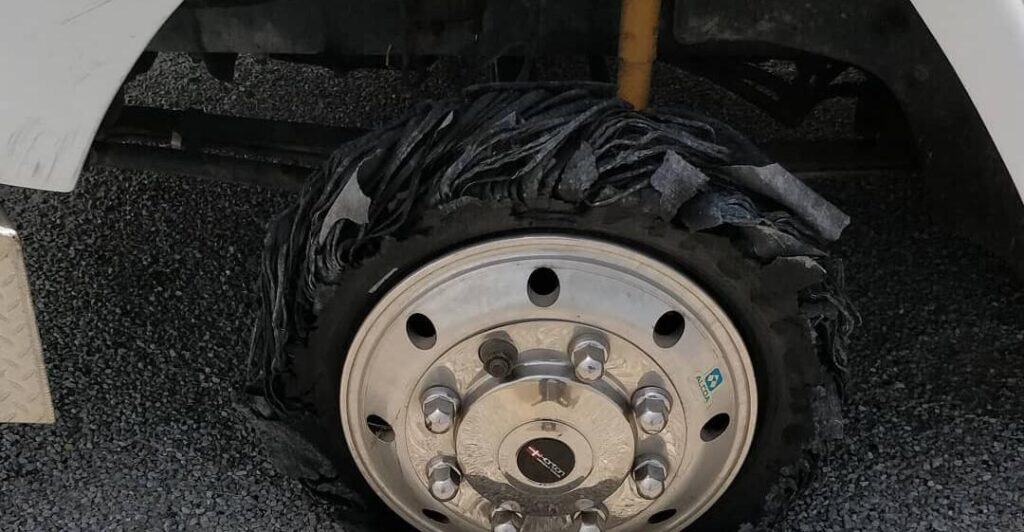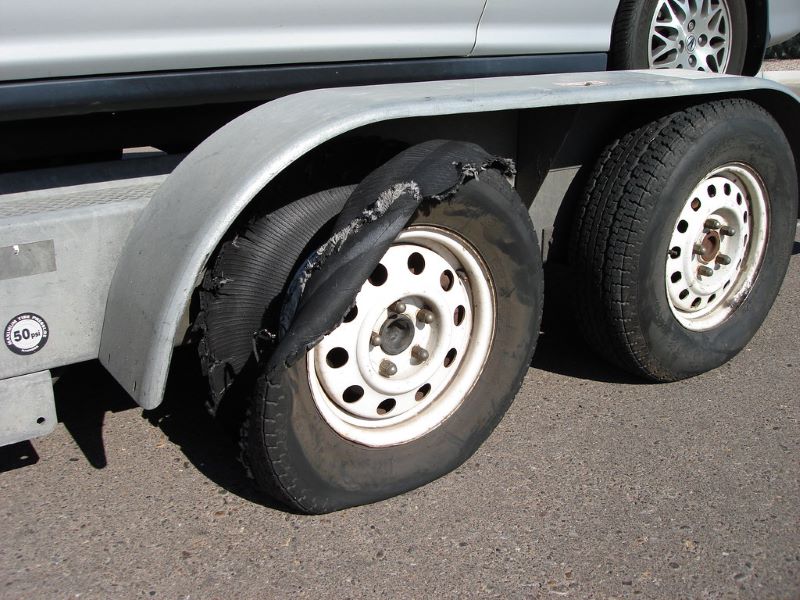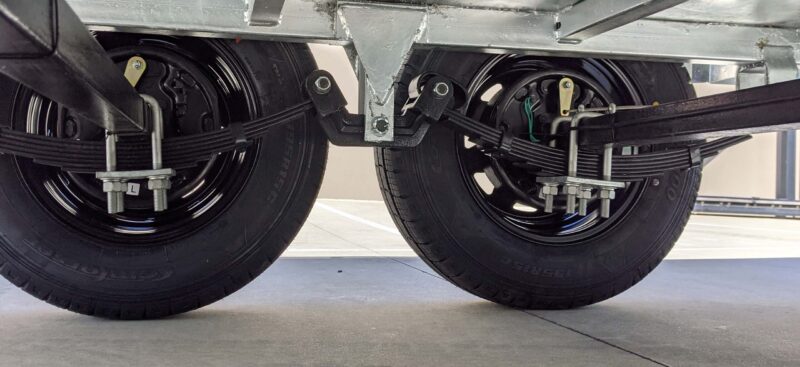As an RV owner, mastering the art of tire pressure is vital for ensuring safe and seamless travels.
The tires of your RV are more than just round rubber companions; they are the literal foundation that carries you on your journeys. Correct tire pressure improves fuel efficiency, handling, stability, and safety while traveling.
This article covers everything about RV tire pressure, giving you the confidence to drive on the open road.
What Is The Correct RV Tire Pressure?
Tire pressure is one of the most crucial aspects to ensure your vehicle operates at its best.
The correct tire pressure is crucial for several reasons:
- It ensures optimal traction on the road, allowing for better control and handling of the vehicle.
- Proper tire pressure improves fuel efficiency, as underinflated tires can increase rolling resistance and consume more fuel.
- It enhances the longevity of the tires by evenly distributing the weight and reducing wear and tear.
- Maintaining the correct tire pressure contributes to a smoother and more comfortable ride, minimizing vibrations and reducing the risk of blowouts.
The right tire pressure for your RV depends on its unique specifications. Every manufacturer lists the recommended tire pressure for each model they produce.
This recommendation is not random – it’s based on calculations specific to your RV’s tire size and load rating.
Strictly adhering to these recommendations is critical for your vehicle’s optimal performance and safety. Hor most travel trailer tires, you are going to fall in the 35-80 PSI range. This is a large range so again it’s important to check your RVs specs.
It’s also important to note that motorhome front and rear tires may require different pressure levels. The difference in pressure levels is because of the vehicle’s weight distribution, which can vary between the front and back.
Always check the manufacturer’s guidelines for both sets of tires.
Most passenger vehicles typically have the same tire pressure front and rear. This is often around 35psi.
However, because of their larger size and heavier load, motorhomes often require a significantly higher tire pressure. Some motorhomes even exceed 100psi.
When replacing tires, consistency is vital. Always replace your tires with new ones that have the exact specifications. This maintains the balance and stability of your RV, ensuring a smooth and safe ride.
How Often Should You Check RV Tire Pressure?
Ensuring the correct tire pressure for your RV is a continuous process that requires regular attention.
If your RV is equipped with tire pressure monitors, these devices should provide continuous readings, allowing you to constantly monitor your vehicle’s tire pressure.
However, it’s essential to rely on these monitors and ensure they work properly. Regularly test and inspect your monitors to confirm they’re providing accurate readings.
Besides relying on monitors, it’s advisable to double-check your tires regularly.
Physical inspections help identify potential issues that may not be obvious on monitors, like visible damage or wear. For those who do not have tire pressure monitors installed in their RVs, it becomes even more crucial to check the tire pressure manually.
The best practice in this case is to check the pressure on travel days before you set off.
This way, you can make necessary adjustments before hitting the road, ensuring optimal safety and performance.
Do Motorhomes Have Tire Pressure Monitors?
Motorhomes can have varying tire pressure monitors, primarily depending on the model and the year of manufacture.
They equip some newer models with these devices as standard features that provide real-time tire pressure information to the driver via a gauge, a display, or a warning light.
However, many older models of motorhomes do not come with tire pressure monitors as a default feature. However, installing aftermarket tire pressure monitoring systems in these vehicles is possible.
Brands like TireMinder provide TPMS solutions for different RVs, including motorhomes.
Even though not all motorhomes have built-in tire pressure monitors, adding an aftermarket system can be a valuable upgrade.
These systems help maintain tire pressure for better vehicle safety and performance.
Can You Add A Tire Pressure Monitoring System To An RV?
Adding a Tire Pressure Monitoring System (TPMS) to your RV or motorhome is not just possible; it’s also a wise choice, particularly for frequent travelers.
A TPMS ensures you’re maintaining the correct tire pressure, promoting safety and efficiency on the road.
Incorrect tire pressure can reduce tire longevity, cause poor fuel economy, and even hazardous blowouts.
There is an array of aftermarket TPMS options available. These systems vary in price and complexity, with some offering essential tire pressure monitoring while others track additional factors like tire temperature.
Brands such as TST, TireMinder, and EEZTire are popular choices, providing reliable, easy-to-use systems that usually include a display for your driver’s area.
Investing in a TPMS if you often travel in your RV is a wise decision. It enhances your safety, extends the life of your tires, and optimizes fuel consumption.
Given the affordable and user-friendly systems on the market, adding a TPMS to your RV is a practical move that offers peace of mind for your journeys.
Does Tire Pressure Increase When You’re Driving?
Yes, tire pressure increases as you drive.
When the tires are in motion, they generate heat, which causes the air inside the tires to expand, thereby increasing the tire pressure.
We commonly use the terms “cold” and “warm” tire pressures to differentiate between tire pressures.
- Cold Tire Pressure: This is the tire pressure before the vehicle has been driven or after it has been parked for at least three hours. Cold tire pressure is considered the baseline or standard tire pressure.
- Warm Tire Pressure: Tire pressure warms after the vehicle has been driven for a while. It’s normal for this to be higher than the cold tire pressure due to the heat generated from driving.
It’s important to check your tire pressure when the tires are cold to get the most accurate reading.
If you check the tire pressure when the tires are warm, the reading will be artificially high, and if you let out air to match the recommended pressure, you may end up under-inflating your tires.
How Much Are RV Tires?
Travel trailer tires can be as cheap as $50 and range up to $250. It’s no secret that trailer tires are known for blowouts. For this reason cheaper is definitely not the way to go.
Motorhome tire prices can significantly vary based on their size and manufacturer. A single tire can range from $200 to over $400.
However, the cost continues beyond purchasing the tires. Changing these tires can also be costly, especially for Class A RVs.
Therefore, when budgeting for motorhome tires, it’s important to consider both the cost of the tires and the potential expenses associated with their installation.
Can You Change RV Tires Yourself?

Yes, you can change RV tires yourself. The most important thing is to get to a safe place to do so if possible. Having flat solid ground away from traffic is where you want to be.
When it comes to motorhome tires it depends mainly on your type of motorhome and comfort level.
If you have a safe way to jack up and stabilize the vehicle for Class B or Class C motorhomes, you can likely manage the tire change yourself.
It’s essential to have the right tools, including an appropriate jack, lug wrench, and safety equipment.
Changing Class A tires is more complex because of their weight and the need for specialized equipment for safe lifting and stabilization. Class A motorhome manuals advise against changing tires and recommend calling for RV roadside assistance.
So, while changing motorhome tires yourself is technically possible, safety should always be the top priority. If you’re ever unsure, it’s best to seek professional help.
Final Thoughts About RV Tire Pressure
Mastering the intricacies of RV tire pressure is a crucial aspect of RV ownership.
It’s not just about maintaining your vehicle; it’s about ensuring safe, efficient, and enjoyable journeys. The correct tire pressure optimizes traction, fuel efficiency, tire longevity, and overall ride comfort.
Remember, RV tire pressure isn’t a one-size-fits-all scenario. It’s determined by specific calculations based on your particular model’s tire size and load rating.
Always adhere to the manufacturer’s recommendations and consider that front and rear tires may require different pressures due to weight distribution.
Regular tire pressure monitoring is essential through built-in monitors, aftermarket systems, or manual checks. If your RV doesn’t already have a Tire Pressure Monitoring System (TPMS), consider investing in one.
They are reliable and user-friendly and can significantly enhance your safety and peace of mind on the road.
For more information on properly maintaining your RV’s tire pressure, consult the vehicle owner’s manual or contact a qualified RV service technician.
By taking precautions, you can ensure your RV rides smoothly and safely for many miles.
Related Reading:
– How To Jack Up A Travel Trailer To Change A Tire
– Can You Use Truck Tires On A Travel Trailer
– Do RVs Have Spare Tires?
– How Often Should Travel Trailer Tires Be Changed?
About the Author:
Mike Scarpignato is an avid RVer who owns a Class C RV and a Class A RV. He loves to travel with his wife Susan and write blog articles about the RV lifestyle.
Mike and Susan also make YouTube videos on the RVBlogger YouTube channel.




